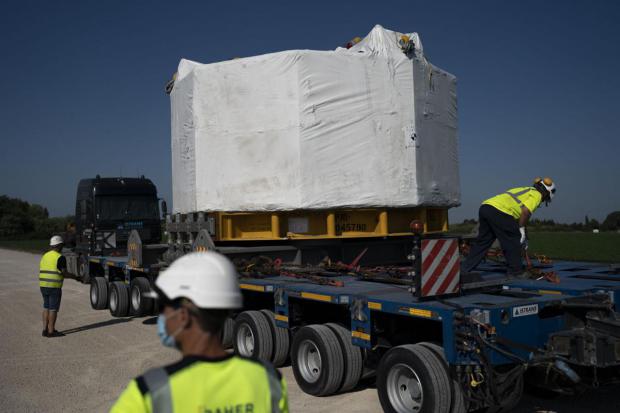
Breaking News
 Liminality: Truthstream Media's Lost History Film | Coming Fourth of July 2026
Liminality: Truthstream Media's Lost History Film | Coming Fourth of July 2026
 This Man Just Explained LA Riots PERFECTLY
This Man Just Explained LA Riots PERFECTLY
Top Tech News
 NVIDIA just announced the T5000 robot brain microprocessor that can power TERMINATORS
NVIDIA just announced the T5000 robot brain microprocessor that can power TERMINATORS
 Two-story family home was 3D-printed in just 18 hours
Two-story family home was 3D-printed in just 18 hours
 This Hypersonic Space Plane Will Fly From London to N.Y.C. in an Hour
This Hypersonic Space Plane Will Fly From London to N.Y.C. in an Hour
 Magnetic Fields Reshape the Movement of Sound Waves in a Stunning Discovery
Magnetic Fields Reshape the Movement of Sound Waves in a Stunning Discovery
 There are studies that have shown that there is a peptide that can completely regenerate nerves
There are studies that have shown that there is a peptide that can completely regenerate nerves
 Swedish startup unveils Starlink alternative - that Musk can't switch off
Swedish startup unveils Starlink alternative - that Musk can't switch off
 Video Games At 30,000 Feet? Starlink's Airline Rollout Is Making It Reality
Video Games At 30,000 Feet? Starlink's Airline Rollout Is Making It Reality
 Automating Pregnancy through Robot Surrogates
Automating Pregnancy through Robot Surrogates
 Grok 4 Vending Machine Win, Stealth Grok 4 coding Leading to Possible AGI with Grok 5
Grok 4 Vending Machine Win, Stealth Grok 4 coding Leading to Possible AGI with Grok 5
Fusion startup builds 10-foot-high, 20-tesla superconducting magnet

In 2015, a group of physicists at MIT did some calculations to rethink how we're approaching the problem of fusion power. High-temperature, nonmetallic superconductors were finally commercially available and could allow the generation of stronger magnetic fields, enabling a simpler, more compact fusion reactor. But the physicists behind the work didn't stop when the calculating was done; instead, they formed a company, Commonwealth Fusion Systems, and set out to put their calculations to the test.
On Tuesday, Commonwealth Fusion Systems announced that it hit a key milestone on its quest to bring a demonstration fusion plant online in 2025. The company used commercial high-temperature superconductors to build a three-meter-tall magnet that could operate stably at a 20-tesla magnetic field strength. The magnet is identical in design to the ones that will contain the plasma at the core of the company's planned reactor.
Aggressive roadmap
Giving yourself less than 10 years to solve a problem that an entire research field has been struggling with for decades is ambitious, but it reflects how relevant fusion could be to the climate crisis we're facing. Several of the company's leaders mentioned climate change as an inspiration for their work.

 Law n' Order
Law n' Order EMP and EMF-Free Vehicles
EMP and EMF-Free Vehicles HERE COMES THE MOTHERSHIP
HERE COMES THE MOTHERSHIP

